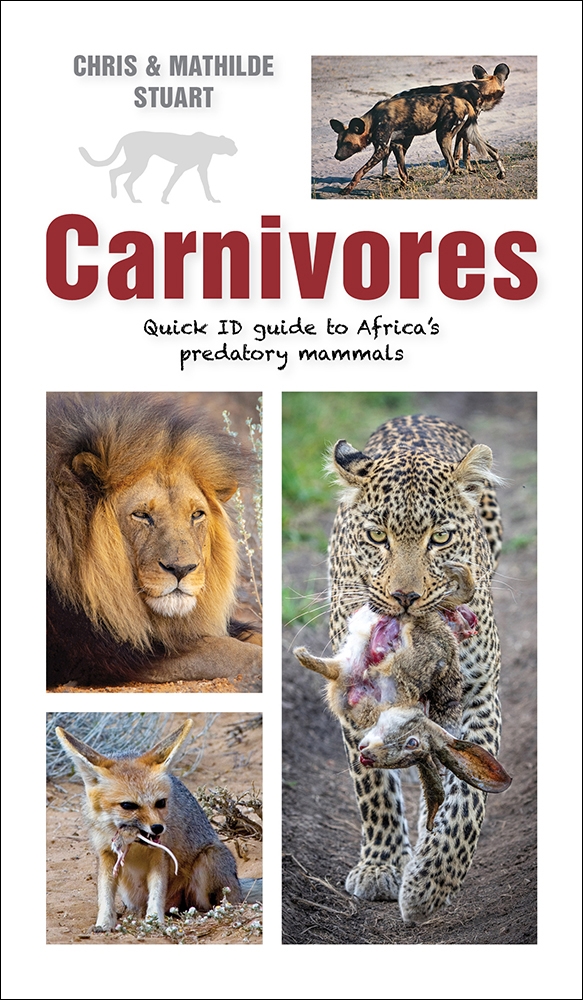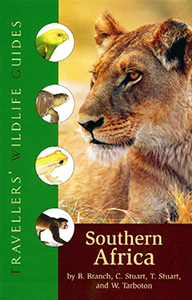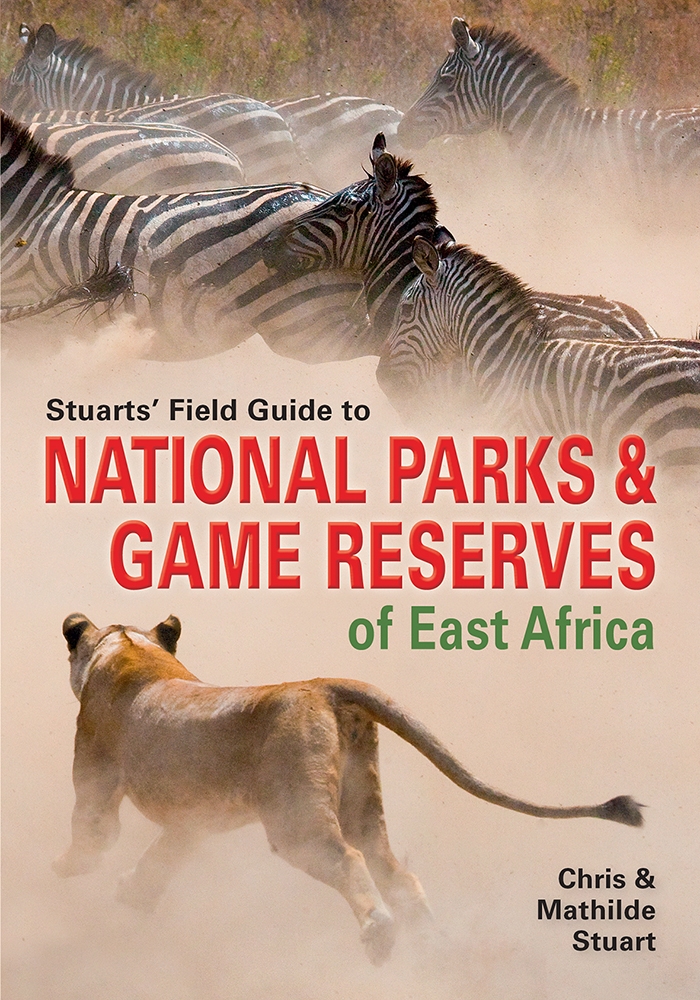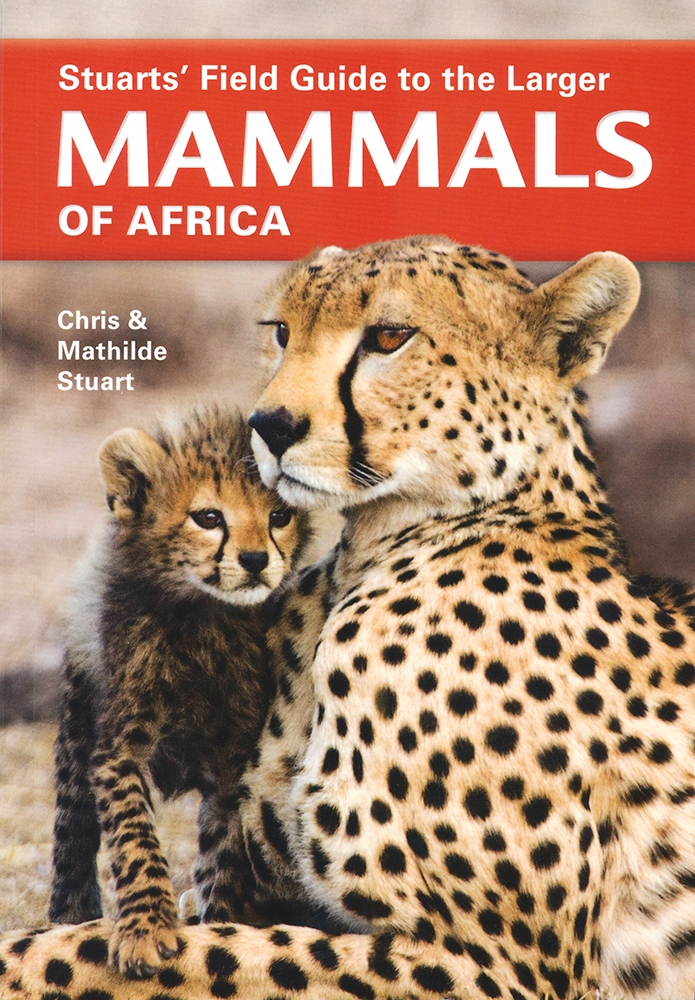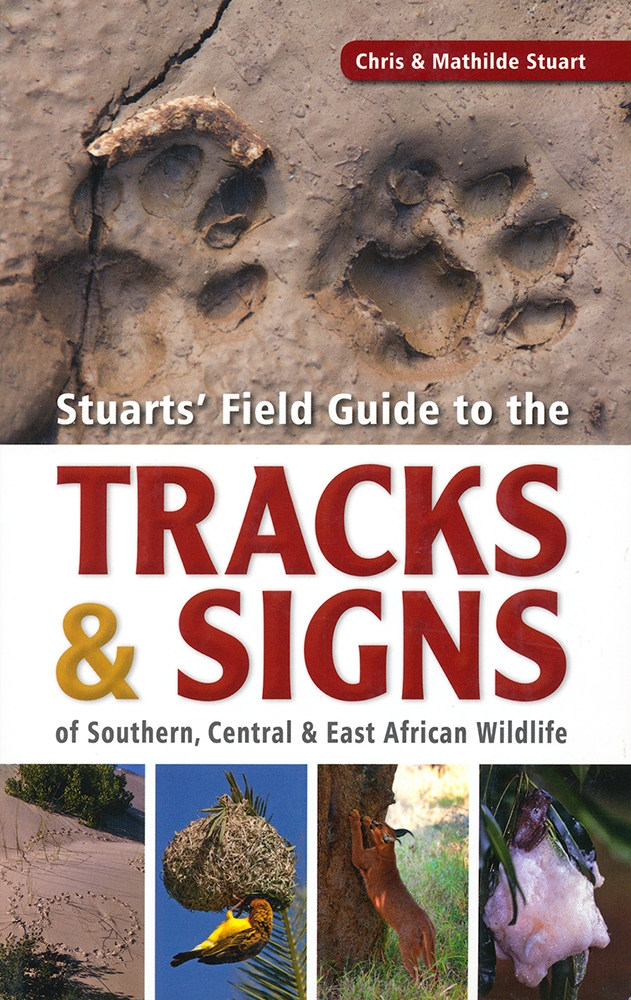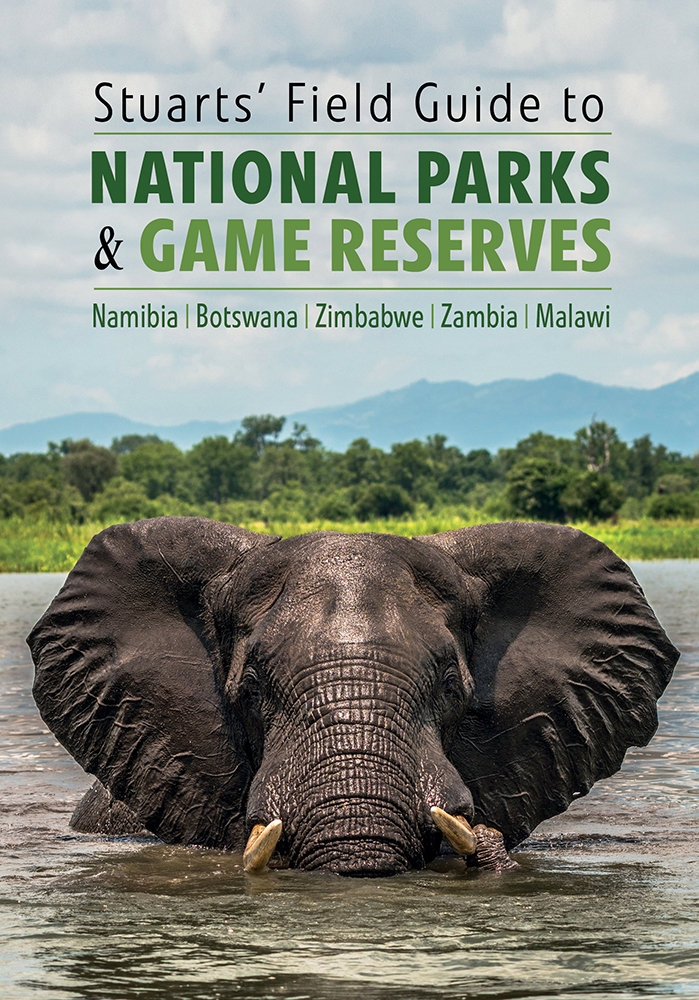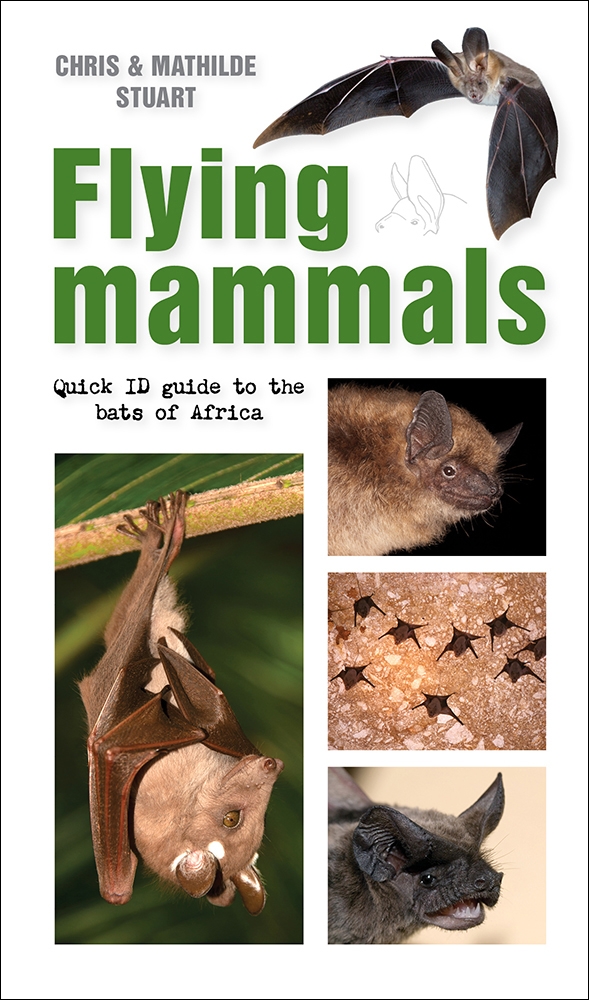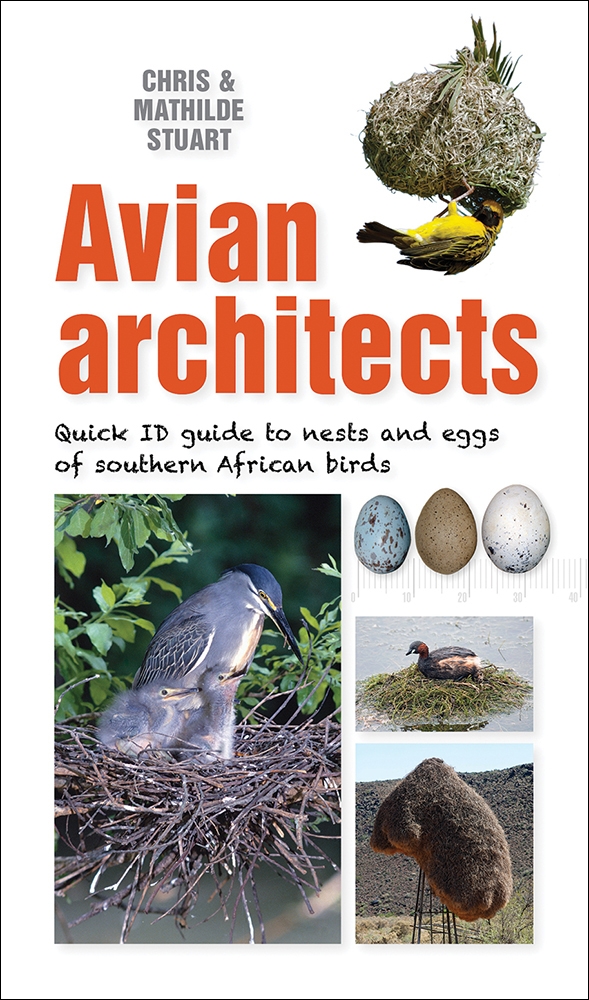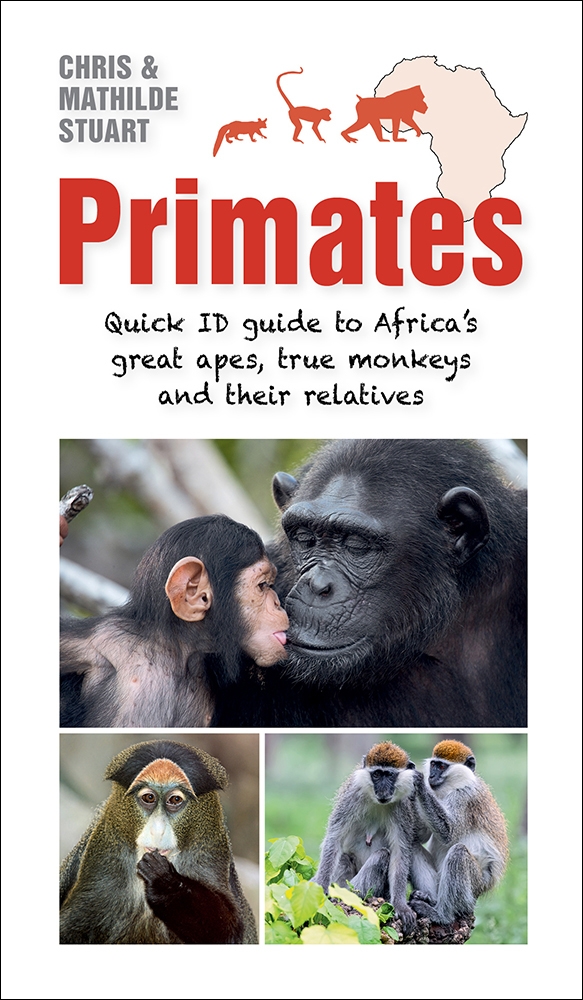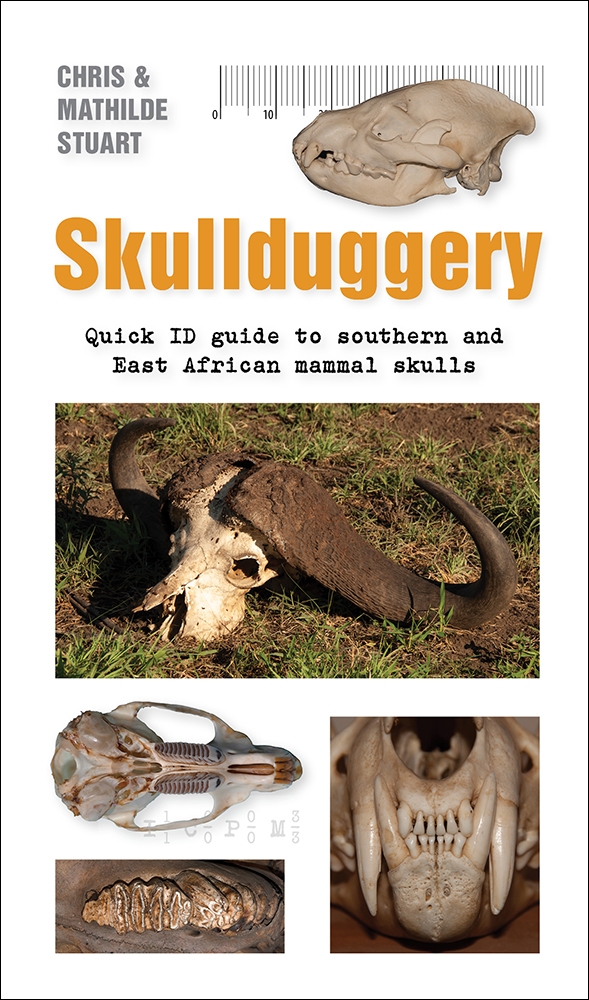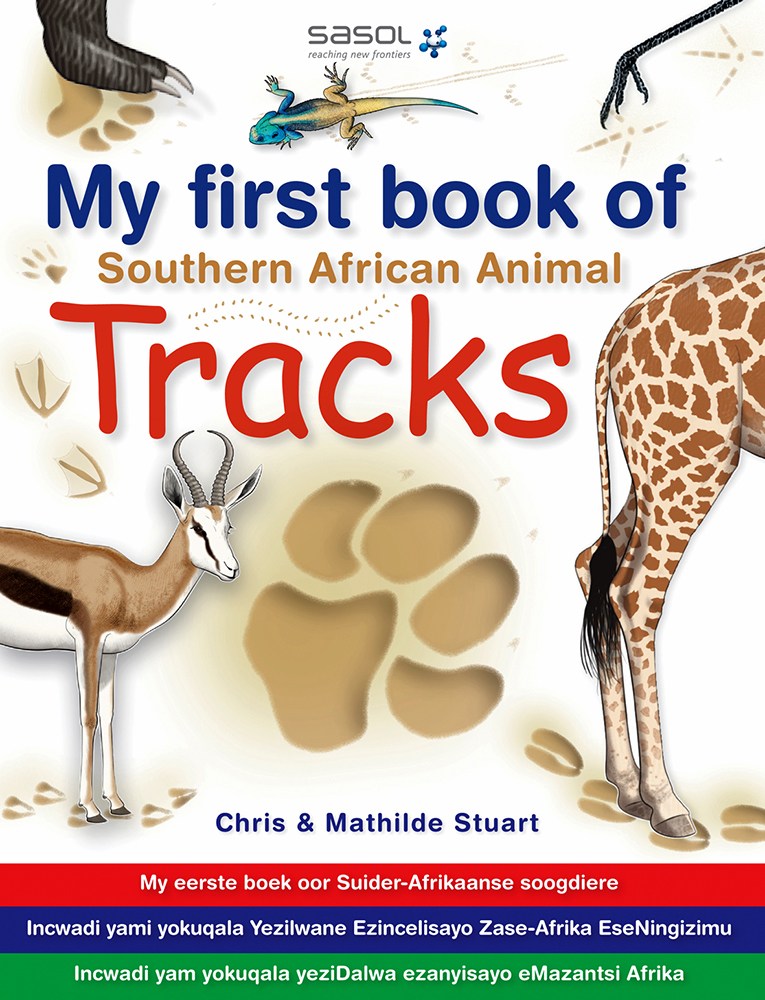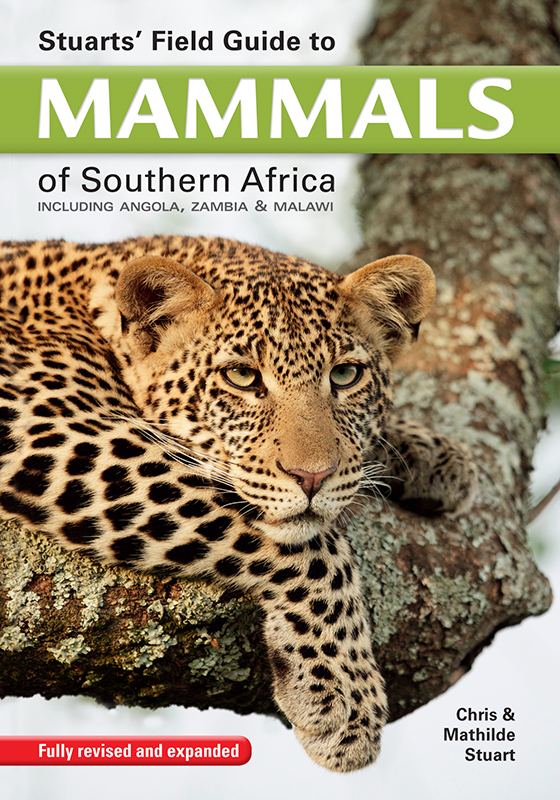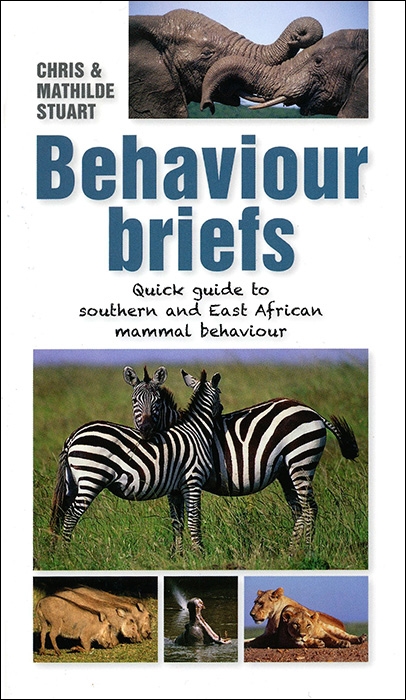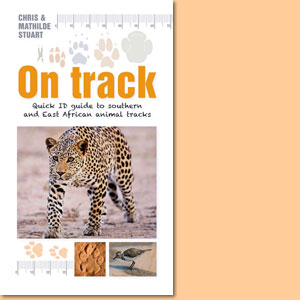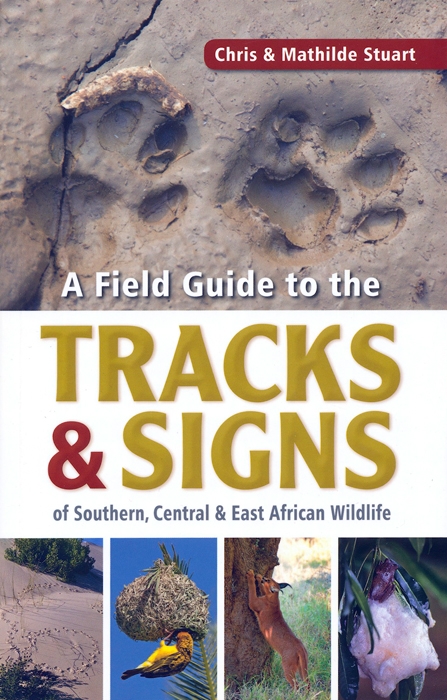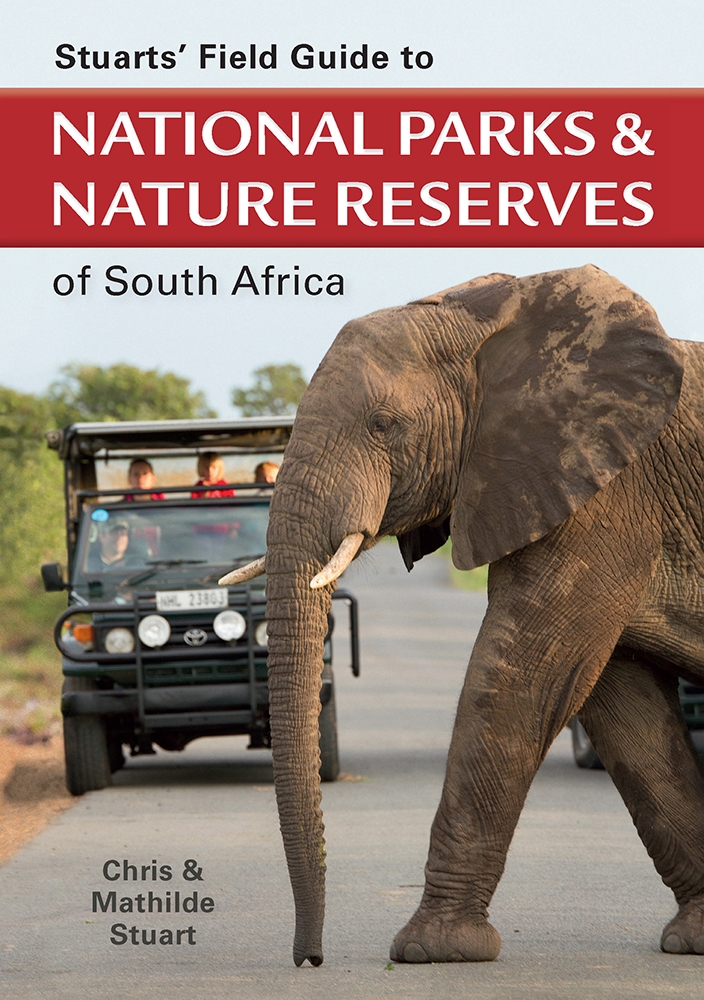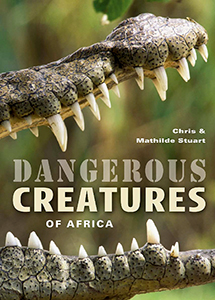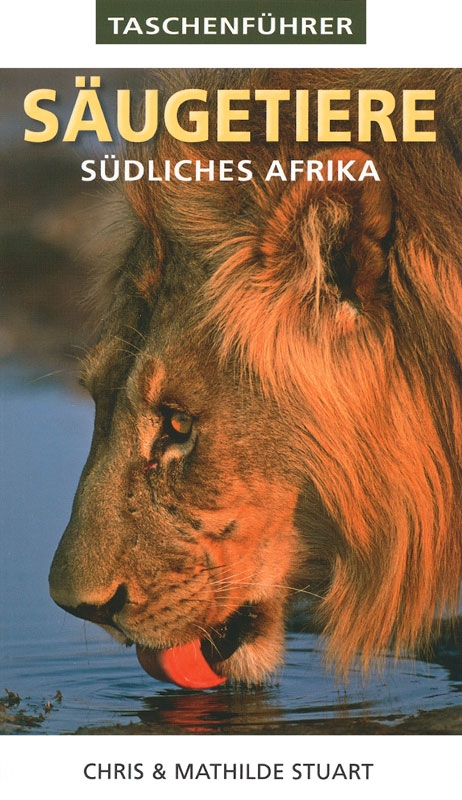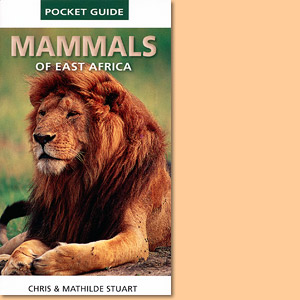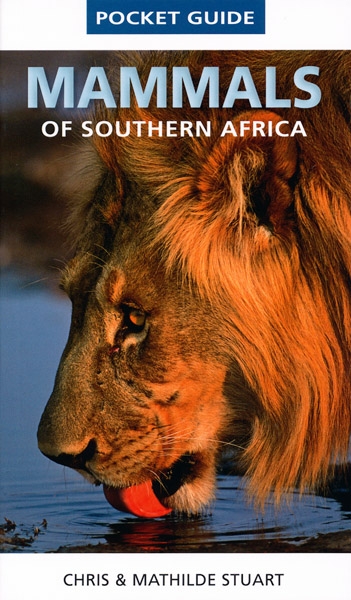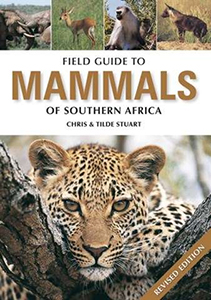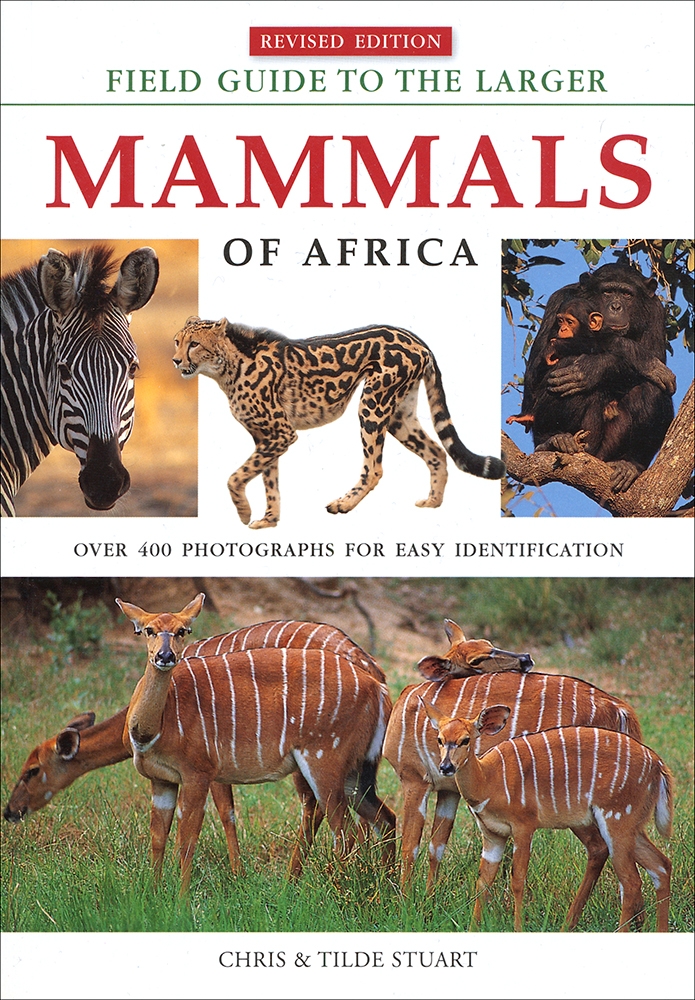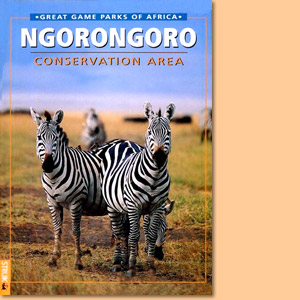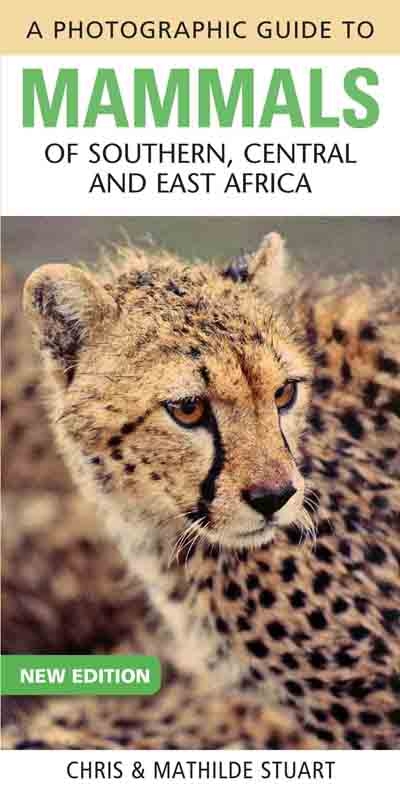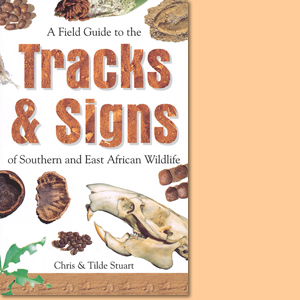Carnivores: Quick ID guide to Africa's predatory mammals, by Chris and Mathilde Stuart.
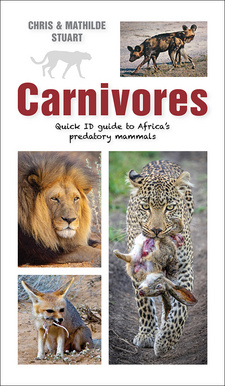
Carnivores: Quick ID guide to Africa's predatory mammals, by Chris and Mathilde Stuart. Penguin Random House South Africa. Imprint: Struik Nature. Cape Town, South Africa 2022. ISBN 9781775847915 / ISBN 978-1-77-584791-5
Carnivores: Quick ID guide to Africa's predatory mammals, by Chris and Mathilde Stuart. Of all the creatures in the animal kingdom it is probably the carnivores, the eaters of flesh, that have captured the human imagination the most.
From the earliest times, lions, tigers, bears, leopards and an array of other beasts of prey served as royal symbols, representing the power of emperors, kings, chiefs, shamans and the like. Even some of the smaller carnivores became emblems of privilege: in Europe, only royals were allowed to wear the pelts of ermines (small, weasel-like carnivores). The first carnivores arose about 60 million years ago, possibly descended from a group of mammals that are related to the pangolins. What did these ancient animals look like? We can't say for certain, but two basic forms evolved from those early ancestors: the cat-like feliforms, characterised by double-chambered ear bullae (bony capsules around the inner and middle ear), and the dog-like caniforms, which have single-chambered ear bullae. There are about 296 land-based carnivore species worldwide. They range from the least weasel (45g) to the polar bear (up to 700kg). Some 84 species occur in Africa, including 12 members of the dog family, 10 of the cat family, 4 of the hyaena family, 12 mustelids, 27 mongooses, 18 viverrids and 1 palm civet. With such diversity, what defines a carnivore? The main characteristic shared by all carnivores is their teeth. All have four well-developed canines and a distinctive set of carnassial teeth. The canines - two in the upper jaw and two in the lower jaw - are adapted for grasping and killing prey, whereas the carnassials - the first molar in the lower jaw and the last premolar in the upper jaw - are designed for slicing through flesh with a scissor-like action. Not all members of the order Carnivora are exclusively meat eaters. Over time, carnivores evolved varied diets. This was accompanied by modifications of the carnassials, which allowed some species to develop omnivorous habits, supplementing their diets with plant foods that they no longer needed to slice. Others, such as the aardwolf, became specialised feeders, licking up soft-bodied termites with their tongues rather than using the tiny pegs that pass for carnassials in this species. Some carnivores, such as lions, African wild dogs and meerkats, are highly social, living in cooperative groups and sharing responsibility for hunting and rearing their young. Others, including leopards, caracals, slender mongooses and genets, are solitary. Still others form lifetime pair bonds, remaining in a territory to raise their young, sometimes with the help of offspring of the previous litter. Such animals include the black-backed jackal, African golden wolf and bat-eared fox. Although this guide is by no means comprehensive, we hope it stimulates an interest in the wide range of carnivores occurring in Africa and provides insight into their diverse and intriguing hunting and feeding behaviours. [...]
This is an excerpt from Carnivores: Quick ID guide to Africa's predatory mammals, by Chris and Mathilde Stuart.
Title: Carnivores
Subtitle: Quick ID guide to Africa's predatory mammals
Author: Chris Stuart; Mathilde Stuart
Publisher: Penguin Random House South Africa
Imprint: Struik Nature
Cape Town, South Africa 2022
ISBN 9781775847915 / ISBN 978-1-77-584791-5
Softcover, 10 x 18 cm, 40 pages, throughout colour photographs
Stuart, Chris und Stuart, Tilde im Namibiana-Buchangebot
Carnivores: Quick ID guide to Africa's predatory mammals
Carnivores: Quick ID guide is a compact and quick ID identification guide to Africa's predatory mammals.
Traveller's Wildlife Guide Southern Africa
Traveller's Wildlife Guide Southern Africa introduces 500 of Southern Africa’s most common amphibians, reptiles, birds, and mammals.
Stuart's Field Guide to National Parks and Game Reserves of East Africa
Stuart's Field Guide to National Parks and Game Reserves of East Africa provides an overview of some 58 protected areas across East Africa.
Stuarts’ Field Guide to the Larger Mammals of Africa
Stuarts’ Field Guide to the Larger Mammals of Africa concentrates on the more visible and easily distinguished larger species.
Stuarts' Field Guide to the Tracks & Signs of Southern, Central and East African Wildlife
Stuarts' Field Guide to the Tracks & Signs of Southern, Central and East African Wildlife, this is the 5th revised edition.
Stuarts' Field Guide to National Parks and Nature Reserves of Namibia, Botswana, Zimbabwe and Zambia
Stuarts' Field Guide to National Parks and Nature Reserves of Namibia, Botswana, Zimbabwe and Zambia.
Flying Mammals Quick ID guide to the bats of Africa
Flying Mammals Quick ID is a compact and quick ID identification guide to the bats of Africa.
Avian Architects: Quick ID guide to nests and eggs of southern African birds
Avian Architects: Quick ID is a compact and quick ID identification guide to nests and eggs of southern African birds.
Primates: Quick ID guide to Africa's great apes, true monkeys and their relatives
Primates Quick ID is a compact and quick ID identification guide to Africa's great apes, true monkeys and their relatives.
Skullduggery: Quick ID guide to southern and East African mammal skulls
Skullduggery is a compact and quick ID identification guide to skulls of southern and East African mammals.
My first book of Southern African animal tracks
My first book of Southern African Animal Tracks introduces 55 different types of animals and their footprints.
Stuarts' Field Guide to Mammals of Southern Africa
Stuart's Field Guide to Mammals of Southern Africa covers near to 400 mammal species including Angola, Zambia and Malawi since the 5th edition of 2015.
Behaviour briefs: Quick guide to southern and East African animal behaviour
Why do they do that and what next? Behaviour briefs is a quick guide to southern and East African animal behaviour.
On Track: Quick ID Guide to Southern and East African Animal Tracks
On Track is a quick identification guide to tracks of Southern and East African most commonly found mammals, reptiles, rodents, birds and insects.
A Field Guide to the Tracks & Signs of Southern, Central and East African Wildlife
Latest edition of A Field Guide to the Tracks & Signs of Southern, Central and East African Wildlife.
Stuarts' Field Guide to National Parks and Nature Reserves of South Africa
Stuarts' Field Guide to National Parks and Nature Reserves of South Africa offers a comprehensive overview of 43 parks, reserves and wilderness areas.
Dangerous creatures of Africa
The focus of Dangerous creatures of Africa is on understanding, identifying, avoiding and surviving these potential hazards of the African wilds.
Taschenführer: Säugetiere, Südliches Afrika
Der Taschenführer Säugetiere: Südliches Afrika, legt seinen Schwerpunkt auf die größeren, öfter gesehenen Tierarten, schließt allerdings auch einige ungewöhnliche Arten ein.
Mammals Of East Africa Pocket Guide
Mammals Of East Africa Pocket Guide covers all of the common and some of the less common mammal species.
Mammals of Southern Africa Pocket Guide
Authoritative and colourfully illustrated, Mammals of Southern Africa Pocket Guide offers concise information.
Field Guide to Mammals of Southern Africa
A total of 337 species are covered in this fully revised comprehensive field guide to mammals of Southern Africa.
Field Guide to the Larger Mammals of Africa
Field Guide to the Larger Mammals of Africa provides over 400 colour photos, with concise, pertinent information highlighting the diagnostic features of each species.
Ngorongoro Conservation Area
From the series 'Great Game Parks of Africa' this is a portrait of the Ngorongoro Conservation Area.
Sasol Roadside Guide. Cape Town-Port Elizabeth: Discovering Nature Along the N2
The Sasol Roadside Guide Cape Town-Port Elizabeth: Discovering Nature Along the N2 interprets the surrounding countryside - plants, birds, mammals, reptiles, agriculture, geology.
A Photographic Guide to Mammals of Southern, Central and East Africa
A Photographic Guide to Mammals of Southern, Central and East Africa introduces 152 mammal species of each family group.
Field Guide to Tracks and Signs of Southern and East African Wildlife
Related to Southern African and East African Wildlife, this great field guide is about their tracks and signs, like droppings, feeding signs, scent marks and others.

